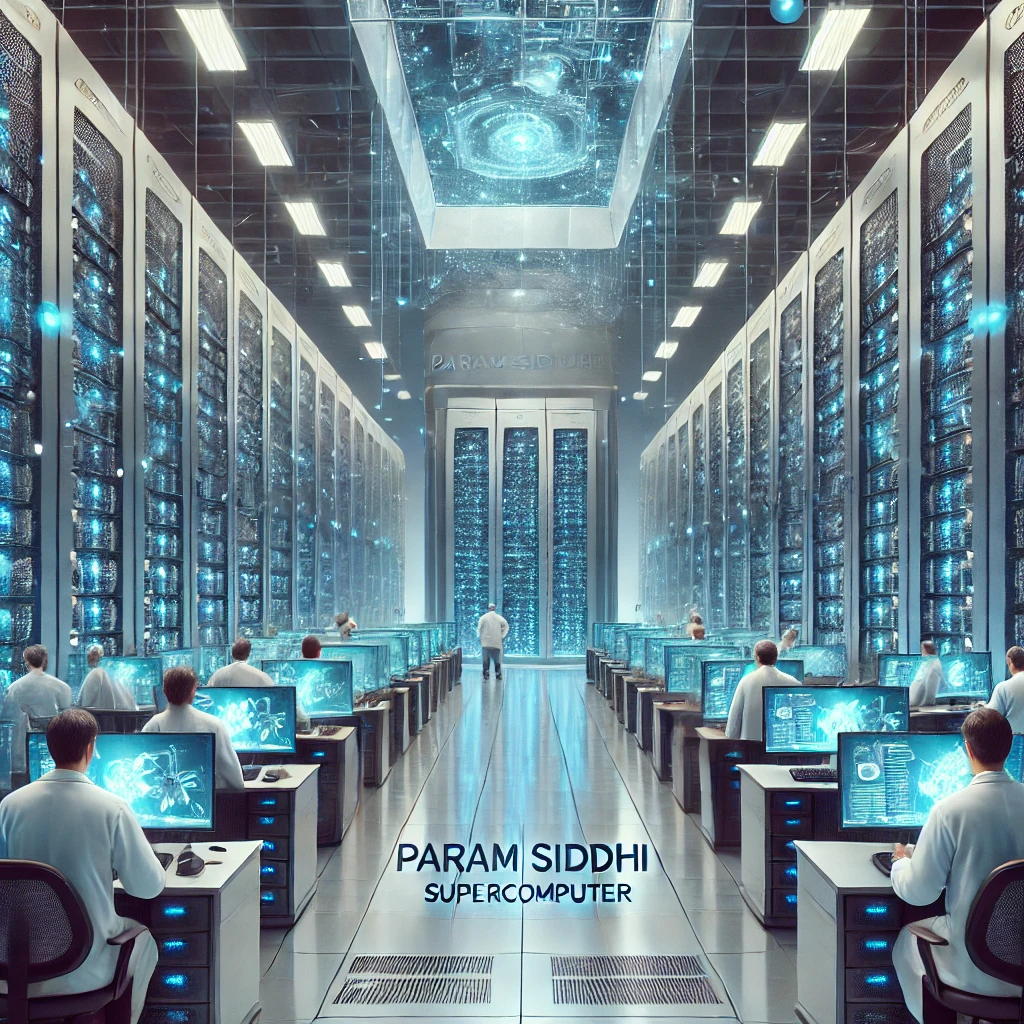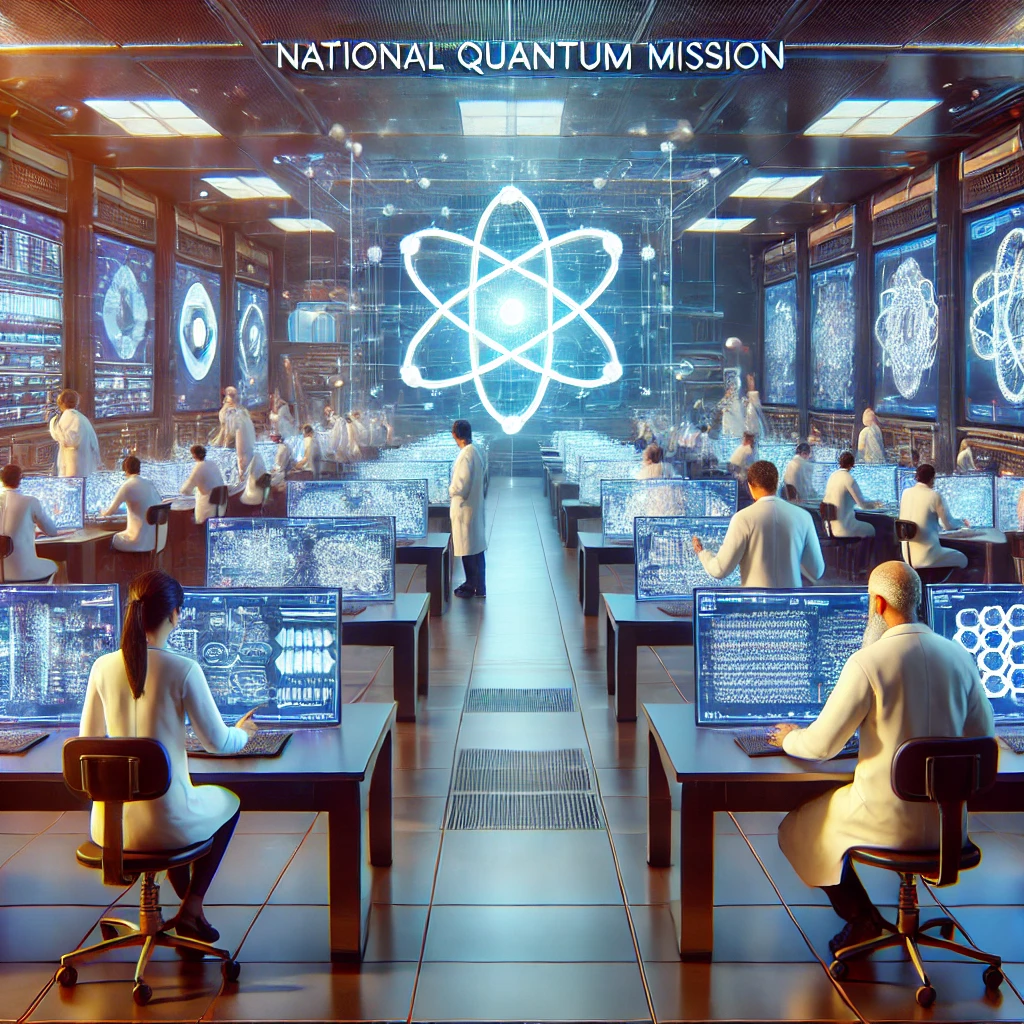As a distinction for India’s Artificial Intelligence supercomputer, Param Siddhi, it has gained a global rank of 63 amongst the top 500 most powerful non-distributed computer systems in the world. It marks increasing capability in India not only in the supercomputing domain but also in AI technology. The supercomputer developed under the National Supercomputing Mission introduced by the DST and MeitY has Rpeak at 5.267 petaflops and Rmax of 4.6 petaflops.
- These supercomputers will also be networked on the National Supercomputing Grid over the National Knowledge Network (NKN).
- The supercomputer is placed in the headquarters of the Center for Development of Advanced Computers in Pune.
What is Param Siddhi Supercomputer?
Param Siddhi, India’s AI supercomputer, has earned a remarkable ranking of 63rd among the top 500 most powerful non-distributed computer systems globally. This achievement underscores India’s growing prowess in high-performance computing and AI technology, reflecting significant strides in the nation’s scientific and technological capabilities.
Development and Collaboration
Param Siddhi is a result of collaborative efforts by the Department of Science and Technology (DST), the Ministry of Electronics and Information Technology (MeitY), and the National Supercomputing Mission (NSM). The Centre for Development of Advanced Computing (C-DAC) spearheaded its development, showcasing the collective strength of these prestigious institutions.
Technical Specifications
The supercomputer boasts an impressive Rpeak of 5.267 Petaflops and an Rmax of 4.6 Petaflops. These performance metrics, measured using the LINPACK Benchmark, highlight its capability to perform quadrillions of floating-point operations per second (FLOPS), with values represented in teraFLOPS and petaFLOPS.
National Supercomputing Mission (NSM)
The National Supercomputing Mission aims to empower India’s academic and R&D sectors by providing robust supercomputing infrastructure. Launched in 2015, this mission is pivotal in enhancing the nation’s computational capabilities and fostering innovation.
Mission Overview
The mission, launched in 2015, is a seven-year initiative with a substantial allocation of Rs 4,500 crore. It aims to establish a comprehensive supercomputing grid across the nation, significantly boosting India’s computational power.
Supercomputing Grid and Connectivity
NSM envisions a supercomputing grid comprising over 70 high-performance computing facilities connected through the National Knowledge Network (NKN). This high-speed network links academic institutions and R&D labs, facilitating seamless connectivity and data exchange.
Participation and Usage
Various academic and R&D institutions, along with key user departments and ministries, actively participate in the mission. These institutions leverage the computing facilities to develop applications of national relevance, driving innovation and research.
Human Resource Development
A crucial aspect of NSM is developing High-Performance Computing (HPC) aware human resources. The mission focuses on training professionals to meet the challenges of developing advanced applications, thus fostering a skilled workforce in the supercomputing domain.
Implementation and Steering
The mission is jointly implemented and steered by the Department of Science and Technology (DST) and the Department of Electronics and Information Technology (DeitY). This collaboration ensures effective governance and strategic direction for achieving the mission’s objectives.
Second Phase Initiatives
In its second phase, the mission, led by C-DAC, aims to support more institutions with supercomputing facilities. This phase focuses on expanding the reach and impact of the mission, ensuring broader access to advanced computational resources.

Objectives of NSM
The National Supercomputing Mission has clear objectives, aiming to establish India as a global leader in supercomputing and enhance the nation’s capability in addressing complex scientific and technological challenges.
Global Leadership
One of the primary objectives is to position India among the world leaders in supercomputing. By tackling grand challenge problems of both national and global relevance, the mission aspires to elevate India’s standing in the global scientific community.
Empowering Scientists and Researchers
The mission aims to empower scientists and researchers by providing them with state-of-the-art supercomputer facilities. These resources enable them to conduct cutting-edge research in their respective domains, driving innovation and scientific advancement.
Conclusion
The rise of Param Siddhi signifies India’s growing prowess in the realm of supercomputing and AI. As civil service aspirants, it’s crucial to appreciate the transformative potential of such advancements. This not only underscores India’s scientific achievements but also sets the stage for future innovations. Embrace this knowledge to shape policies that leverage technology for national development.
| Param Siddhi Supercomputer UPSC Notes |
| 1. Param Siddhi, the artificial intelligence supercomputer of India, ranks 63rd in the most powerful non-distributed computer systems in the world. 2. It is designed by C-DAC under the National Supercomputing Mission by DST and MeitY. 3. It achieves a 5.267 petaflops peak against Rpeak and a 4.6 petaflops maximum against Rmax performance. 4. It was aimed at accelerating India’s R&D through high-performance computing when the mission was started in 2015. 5. Over 70 facilities are connected through the National Knowledge Network to enhance connectivity. 6. It focuses on creating a workforce proficient in HPC. 7. It aims at further extension of supercomputing facilities to more and more institutions to enhance access. |

